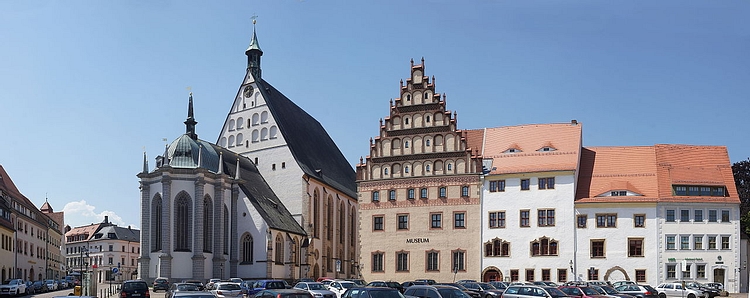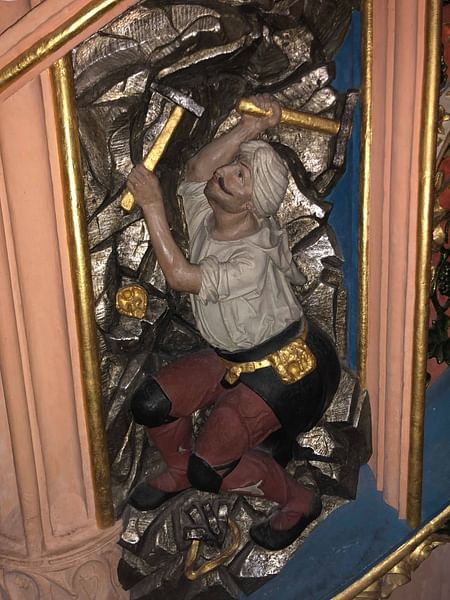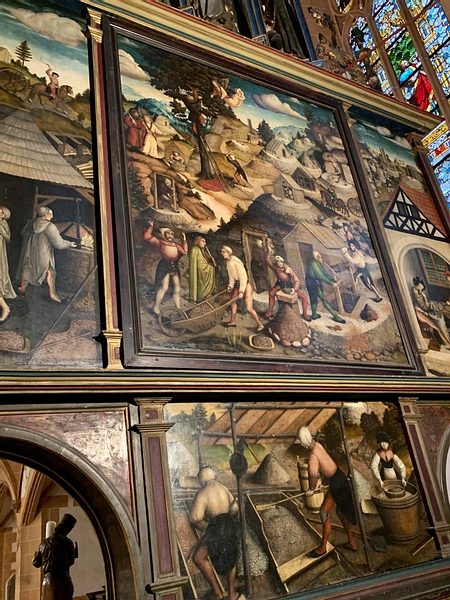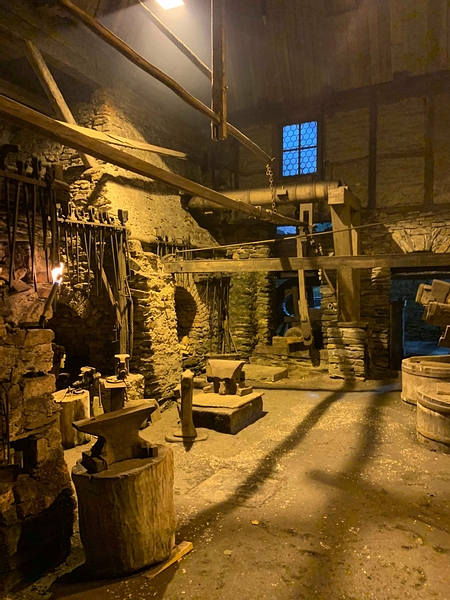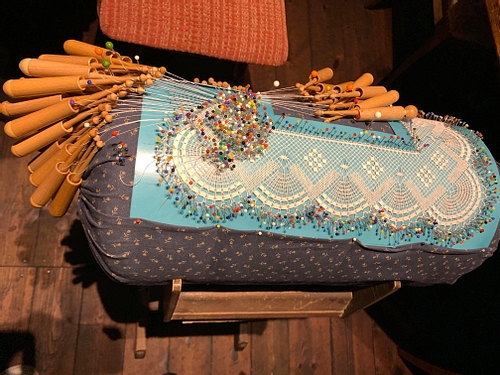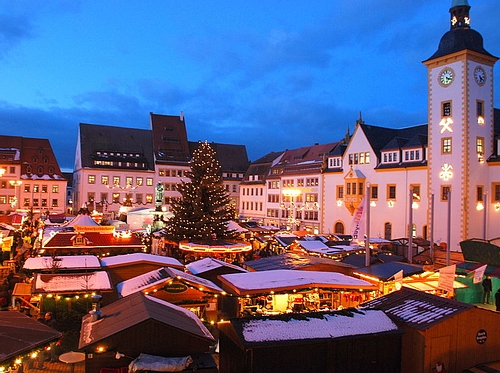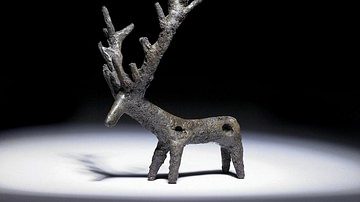The Ore Mountains (Erzgebirge) on the border between Germany and the Czech Republic is a region rich in history and culture connected to the mining industry. For centuries the cities on both sides of the mountain range had sustained themselves and flourished by the extraction of tin, copper, zinc, uranium, and most importantly silver. Even though the mines are now closed the mining culture and heritage is still widely celebrated and visible for visitors, with the hammer and chisel motif on many buildings in the different mining towns.
The rich mining heritage of the region was recently inscribed on the UNESCO world heritage list (July 2019 CE), with sites on both sides of the border. On the German side, in the Free State of Saxony, the cities of Freiberg and Annaberg-Buchholz has much to offer in educating visitors about the mining industry, both from the Middle Ages and more recent times and how this intensive industry shaped the lives and culture of the people living there. A visit is definitely recommended for anyone interested in mining history, early industrialization or for those who seek to experience an authentic German Christmas market.
Freiberg
Freiberg, a one-hour train ride from Dresden, traces its history back to 1168 CE. At that time the forest region was under the control of the Margrave of Meissen. A silver ore was discovered close to the small settlement Christiandorf and lead to the establishment of the city of Freiberg, which got its name from the mining rights belonging to the “free miner”. The mining industry became a very important source of income for the Margrave of Meissen, Otto II (r. c. 1156-1190 CE), known later as Otto the Rich. A large statue of the town's 'founder' can now be seen at the main square of the historic city center. Freiberg's importance and wealth increased rapidly after the discovery of silver, and it remained the economic center and mint of Saxony until the 16th century CE. The mining industry continued in the Freiberg region for 800 years until the mines were finally closed in 1968 CE.

Even though the town was destroyed by fire several times and suffered during the Thirty Years' War (1618-1648 CE), much of the medieval town is still standing. Walking around in the historic center, one architectural feature is especially remarkable: the Gothic patrician houses with very high and steep pitched roof constructions. The main square, Obermakt, is definitely worth a visit, where you will see both the statue of Otto the Rich and the beautiful Town Hall. On the north side of the square, you can also marvel at a gate with intricate carvings depicturing the miners hard at work.
It is impossible to visit this city without being drawn towards the rich mining history and culture. To learn more, visitors are recommended to spend a couple of hours in the Freiberg City and Mining Museum. Located in a stunning late Gothic building, it is one of Saxony's oldest museums, established in 1861 CE. The museum is filled with tools, art, photographs, and other objects connected to work in the mines throughout the ages or the culture that flourished thanks to the mining industry. In addition, no one should leave without a visit to the Freudenstein Castle, where the mineral exhibition Terra Mineralia is on display with over 3,500 minerals, precious stones, and meteorites. The exhibition is presented by the Technical University Bergakademie Freiberg, the oldest university of mining and metallurgy in the world, and is a real treasure trove filled with gems from all over the world.
Annaberg-Buchholz
To learn more about the rich mining heritage of the region the next stop of any traveler should be Annaberg-Bucholtz. Annaberg is named after St. Anne the patron of miners and was founded when silver was found there towards the end of the 15th century CE. The city flourished due to the riches that the mines brought, and the culture and heritage are still prominent all around when walking the scenic and steep streets of the medieval town. As in Freiberg, there is a museum about the city's history and its deep connection to mining, the Ore Mountains Museum. Also quite old, as it was established in 1887 CE, this is a place to learn more not only about the life of the miners but also the old craft of the pewterers, potters, and passementerie makers.
A must-see is the St. Anne's Church on top of one of these steep streets. It is a late Gothic hall church built between 1499 and 1525 CE, beautifully decorated and famous for its clear connection to the strong mining culture in the region. One example of this connection is the miner depicted at the lowest staircase on the pulpit – not a typical religious image!
Further, the mining heritage is most evident on the backside of the Annaberg Mountain Altar, which, in 2019 CE, was listed on the UNESCO World Heritage List as a part of the Ore Mountain Mining Region. Painted by Hans Hesse (1470-1539 CE), the altar depicts the different types of work done in or in connection to the mines. It is fascinating to study the painting and imagining all the men (and few women) who spent their lives in and around the mines for centuries. Today, hard labor in the complete darkness for hours and the dangerous conditions are almost incomprehensible for most people.
A little walk from the church and the town center, you can visit the Frohnauer Hammer Museum, located in the Frohnauer village, now a part of Annaberg-Buchholz. The most exciting part of the museum is a preserved hammer forge where you can experience what an authentic 17-18th-century CE hammer forge looked liked. With burning torches and the sound of the waterwheel in the background, you can see what tools and machines were used to shape and forge the metals from the mines into coins, tools, and more.
Visiting the forge is an absolutely magical experience, where you really feel like you have traveled back in time. On the other side of the street, you can also visit the manor house of the owner of the forge, which is also preserved with its 18th-century CE interior. Here you can learn about another important aspect of Ore Mountain culture and tradition: bobbin lace making. Bobbin lace making was introduced to the region by the 16th-century CE entrepreneur Barbara Uthman (1514-1575 CE) and became an important source of income for the region next to mining. In addition, there is also a section of the museum dedicated to the folk art of carving and art connected to mining.
Visiting the Mines
After learning so much about mining culture, no visit to the Ore Mountains would be complete without actually entering a mine. In the Annaberg-Buchholz area, you can visit the Markus Rohling Stolln Visitor Mine. This mine was active in the silver and cobalt industry from 1733 to 1857 CE, and later in the uranium industry under SAG Wismut. After getting your helmet and proper gear, the mine tram will take you 600 meters into the mine. Here you will be given a guided tour, showing the different techniques and tools that had been used over time from candles and hammer and chisel to automatic drills and dynamite. When the hammer and chisel were used, it was normal to cut out approximately 3 cm of rock each day – that is not a lot when you have been hammering all you got all day! It makes you wonder where these miners got their motivation.

As the different sections of the mine are dedicated to different time periods it is fascinating to track the development of the industry and the progressively advanced machinery. You will also get to see the advanced waterwheel and pump system that was constructed to keep the rising water out of the mines. Today much of the lower levels are underwater, but the waterwheel is functioning, and if you are lucky they might turn it on so you can get a real sense of how it works.
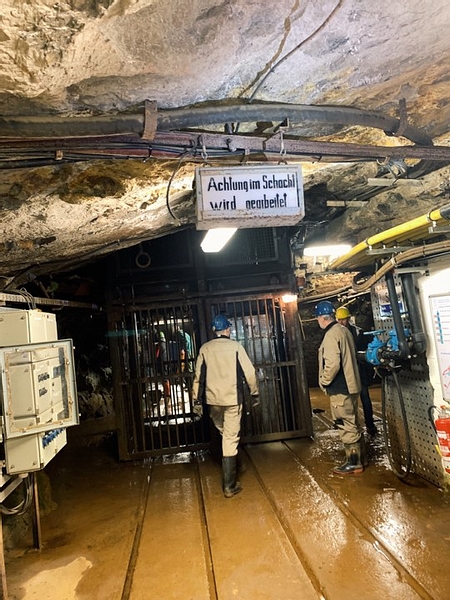
Christmas in the Ore Mountains
Elaborate Christmas markets are becoming increasingly popular all over Europe and beyond, but the original and most authentic ones can be found in Germany. The Christmas markets in the Ore Mountains are wonderful to visit not only because of their authenticity but also because the Christmas traditions are so strongly linked to the mining culture of the region. Christmas traditions from this little part of the world are now an integrated part of most Europeans' Christmas decorations, and the region is even referred to as the “Home of Christmas”. The most visible mining element of the Ore Mountains is the Mettenschicht, the miners' parade. The Mettenschicht is a celebration of the miners' last shift before Christmas and is celebrated with traditional food, music, and people dressing up in miner uniforms.
The wooden Christmas figures that now are crucial for a proper Christmas were first made in these mountains. Wood carvings, in the form of toys, pyramids, and nutcrackers are on display all over towns such as Freiberg and Annaberg around Christmas. The carving tradition has a long history and is also linked to the mining culture of the region. From the 16th century CE, the miners who lost their jobs in unstable periods had to earn money some other way. They then started to use their delicate hand skills learned in the mines to carve wooden figures with motifs often linked to life in the mines or special celebrations such as Christmas. It became an important aspect of Erzgebirge folk art and is now a crucial part of the Christmas traditions in the region and many other places around the world. A special type of wooden figure is especially fascinating; the smoking man. The smoking man is hollow so that you can put incense there, and the smoke will come out of his open mouth so that it looks like he is puffing his pipe.



